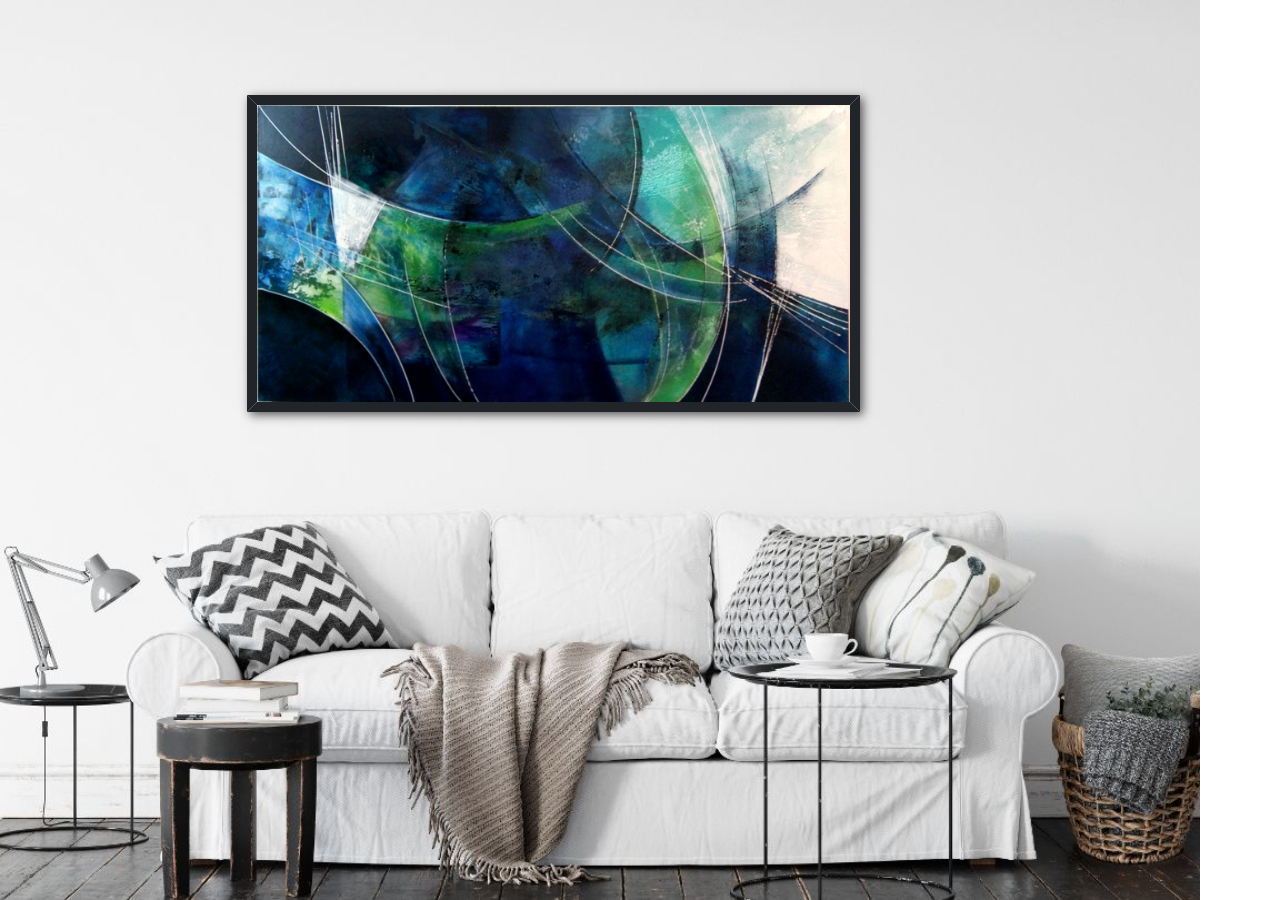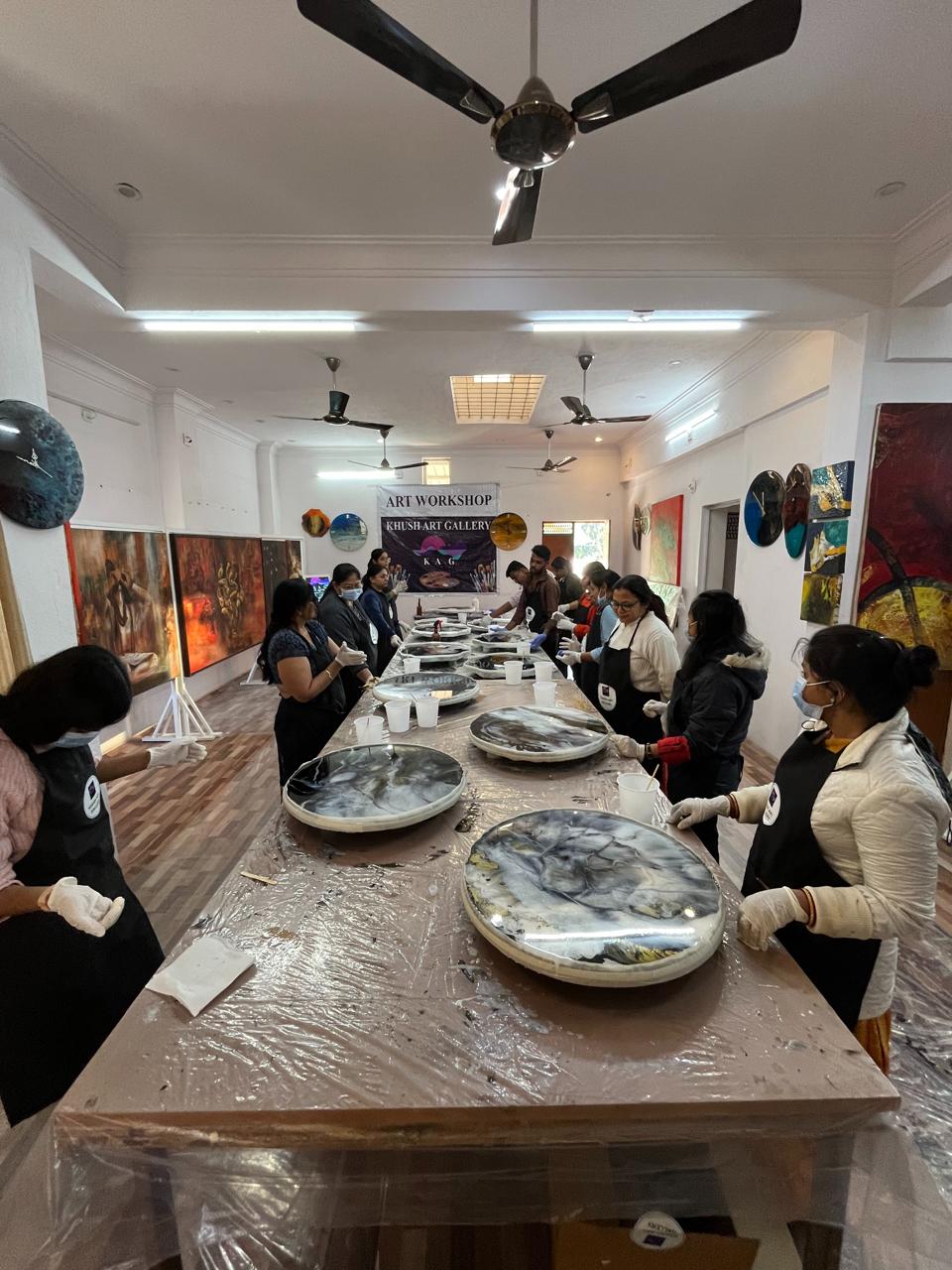
Abstract Art Painting
- knowledge
- April 26, 2024
Why Acrylic color is used in Abstract Acrylic Painting
Abstract painting is a captivating form of art that allows artists to express their emotions, thoughts, and perceptions through vibrant colors, bold strokes, and imaginative compositions. In this article, we'll delve into the world of abstract acrylic painting, exploring its techniques, styles, and the boundless opportunities it offers for creative expression.
1.Understanding Acrylic Paints
Acrylic paints are known for their versatility, fast drying time, and vibrant pigments. Unlike oil paints, which require solvents for thinning and cleaning, acrylics can be diluted with water, making them easy to work with and environmentally friendly. Additionally, acrylics offer excellent adhesion to a variety of surfaces, including canvas, wood, and paper.
2.Properties of Acrylic Paints
Acrylic paints consist of pigment particles suspended in a polymer emulsion. When the paint dries, the water evaporates, leaving behind a flexible acrylic polymer film that is waterproof and resistant to fading. This quick drying time allows artists to layer colors and create intricate textures without waiting for extended periods between layers.
3.Benefits of Using Acrylics for Abstract Painting
The fast drying time of acrylic paints is particularly advantageous for abstract artists, as it allows for spontaneous experimentation and rapid exploration of ideas. Unlike oil paints, which can take days or even weeks to dry, acrylics dry within minutes, enabling artists to work efficiently and build layers of paint without delay.
4. Getting Started with Abstract Art Painting
Before diving into your first abstract Art painting, it's essential to gather the necessary materials and prepare your workspace .Follow the steps to get start.
Selecting the Right Materials
When choosing materials for abstract Art painting, opt for high-quality acrylic paints, brushes, and canvases. Experiment with different brush sizes and shapes to achieve various effects, and invest in a sturdy canvas or painting surface that can withstand the layers of paint and texture you'll be applying.
Preparing the Canvas
Before painting, it's crucial to prepare your canvas by priming it with gesso to create a smooth, absorbent surface. Gesso also helps to prevent the paint from sinking into the canvas and provides a stable foundation for your artwork. Once the gesso is dry, you're ready to start painting!
5. Techniques for Abstract Acrylic Painting
Abstract painting Art can be created with different technique.. Here are some popular techniques to experiment with:
Layering
Layering involves building up multiple layers of paint to create depth, dimension, and visual interest in your artwork. Start with a base layer of paint and gradually add more layers, allowing each layer to dry before applying the next.
Texturizing
Texturizing is a technique that involves adding texture to your painting surface using various tools and materials. You can create texture with palette knives, sponges, or even everyday objects like cardboard or bubble wrap. Experiment with different textures to add complexity and tactile appeal to your artwork.
Pouring
Pouring is a dynamic technique that involves mixing acrylic paint with pouring medium or water and pouring it onto the canvas. Tilt the canvas to guide the flow of paint, creating mesmerizing patterns and organic shapes. Pouring is a fun and unpredictable technique that can result in stunning abstract effects.
Splattering
It is a technique in which color is splatter on canvas with brush ,wooden stick ,plastic film etc.
Color Theory in Abstract Acrylic Painting
Color plays a crucial role in abstract acrylic painting, evoking emotions, setting the mood, and conveying meaning. Understanding color theory can help you create harmonious compositions and express yourself more effectively through your artwork.
Understanding Color Harmonies
Color harmonies are combinations of colors that are aesthetically pleasing to the eye.
Mixing and Blending Colors
Acrylic paints can be easily mixed and blended to create an infinite range of colors and shades. Experiment with mixing primary colors to create secondary and tertiary colors, and practice blending colors on the canvas to achieve smooth transitions and gradients.
Composition and Design Principles
In addition to color, composition and design principles play a crucial role in abstract acrylic painting. Pay attention to elements such as balance, contrast, and movement to create visually engaging and harmonious artworks.
In over all Acrylic paint is best for creating abstract art painting as it is fast drying and easy layering and easy to handle and different creativity can easily be with Acrylic paint


SHARE THIS NEWS